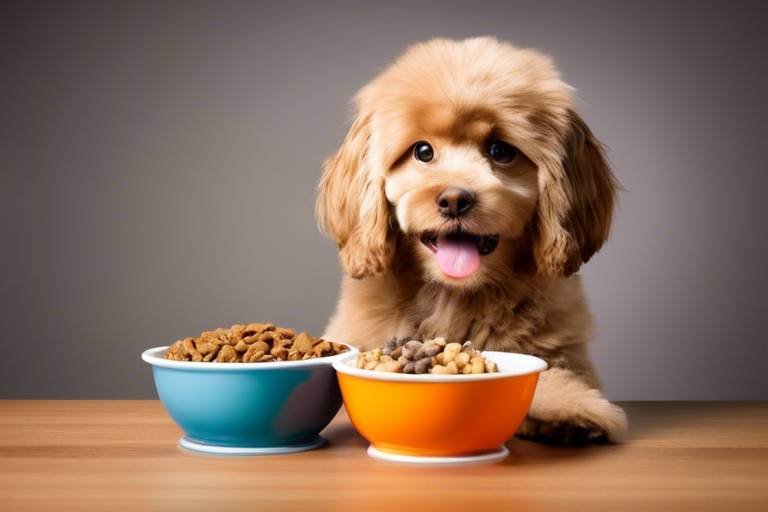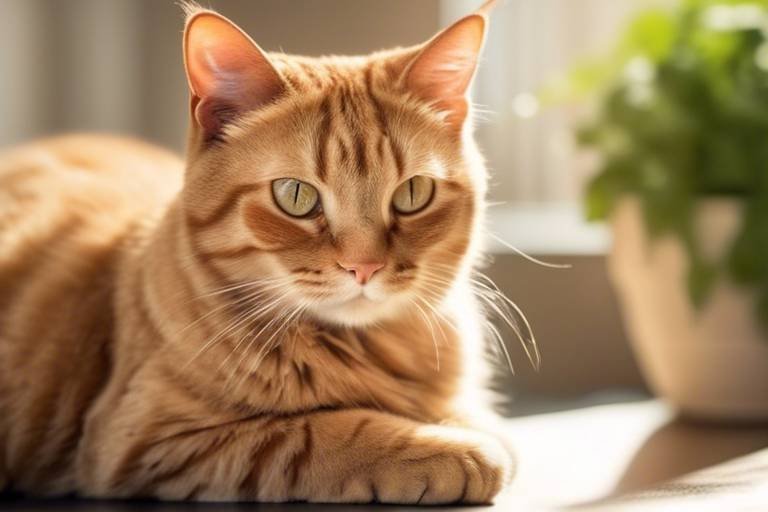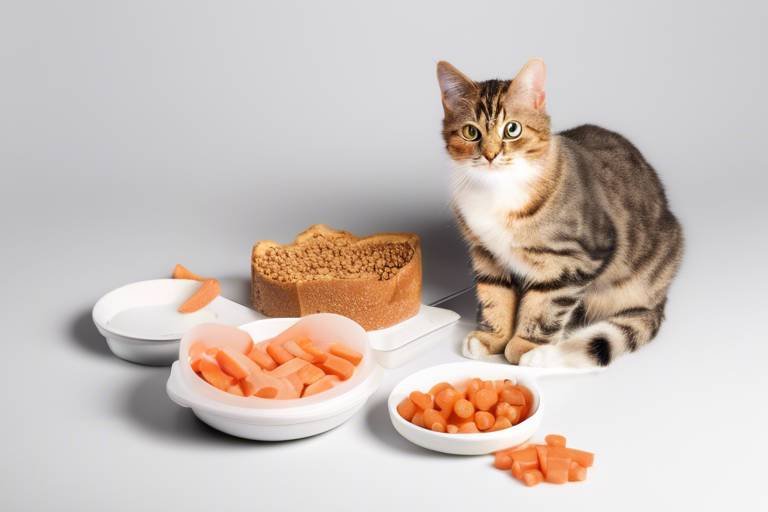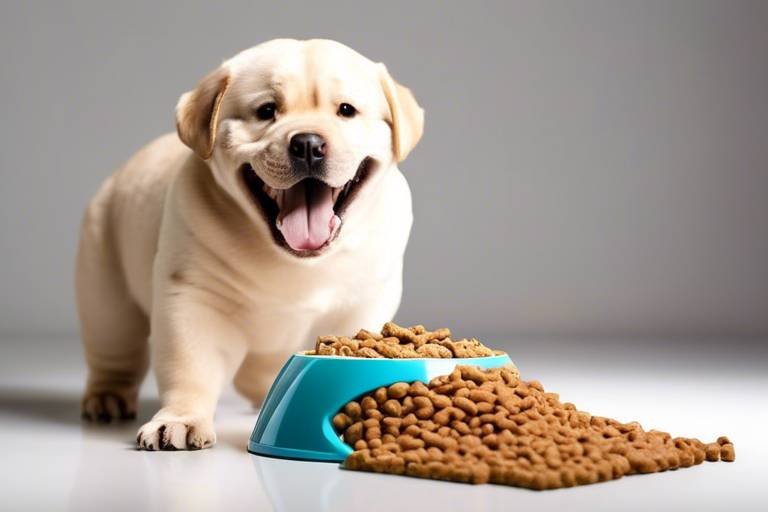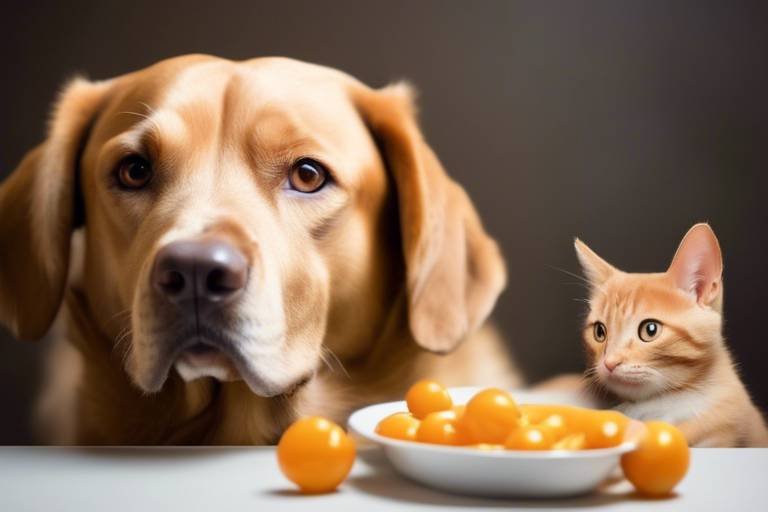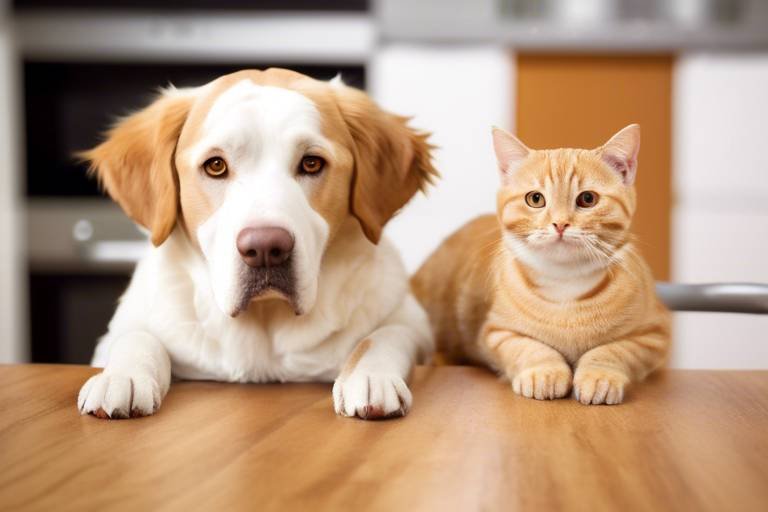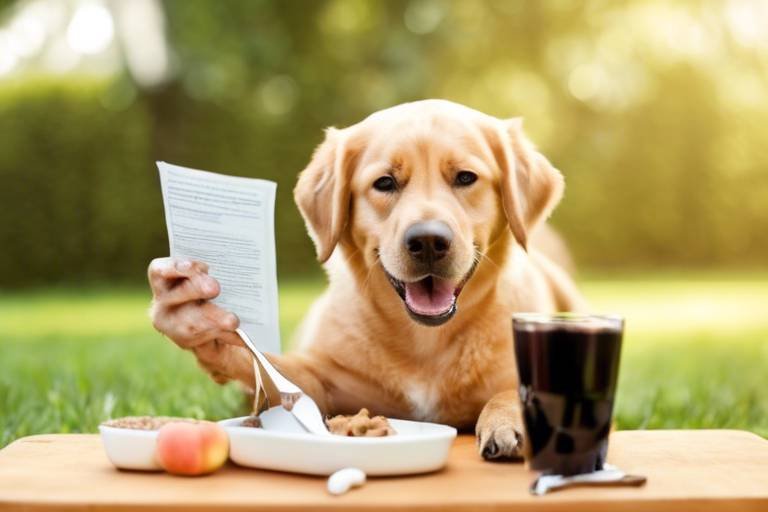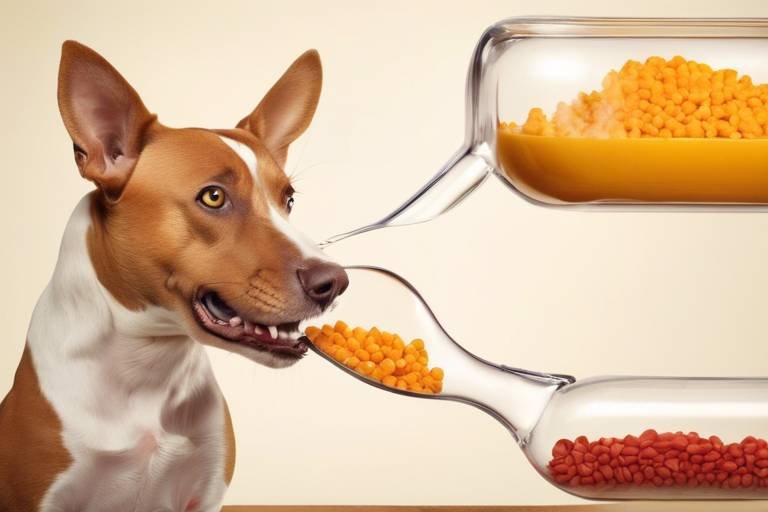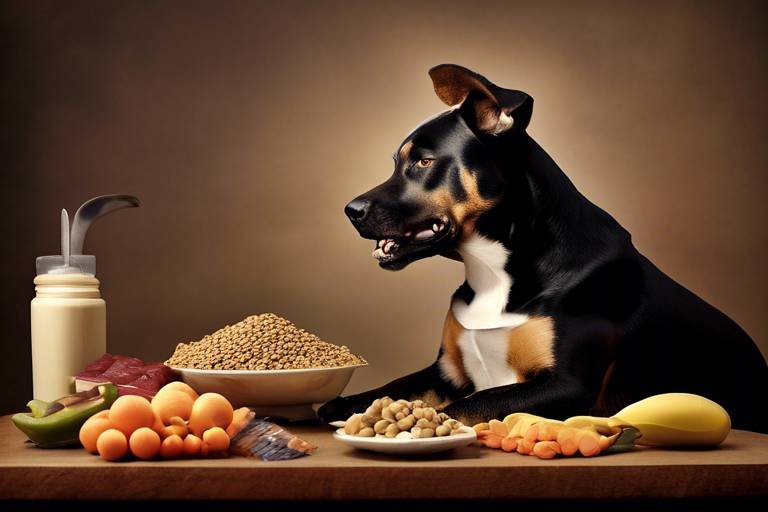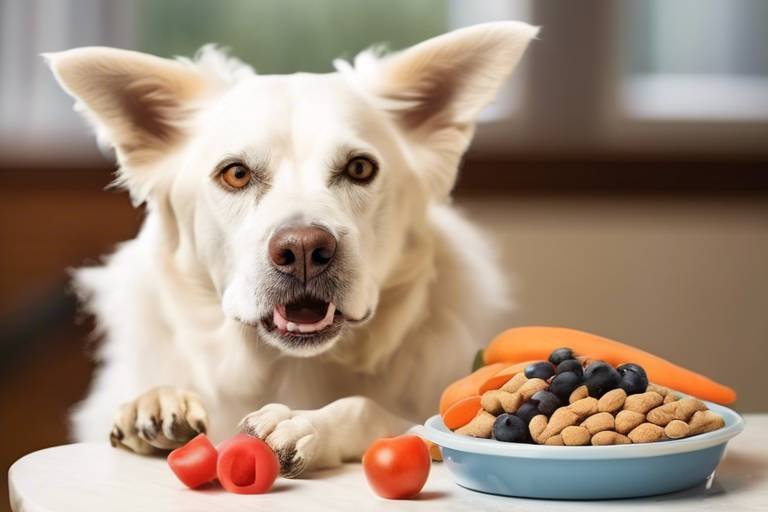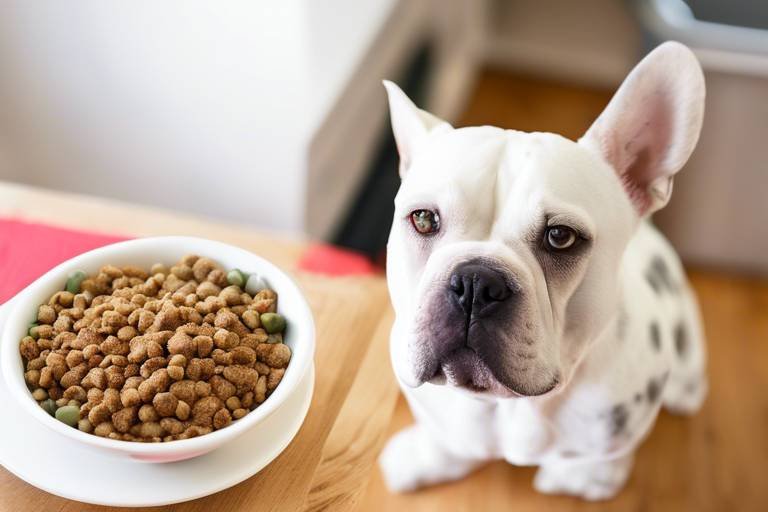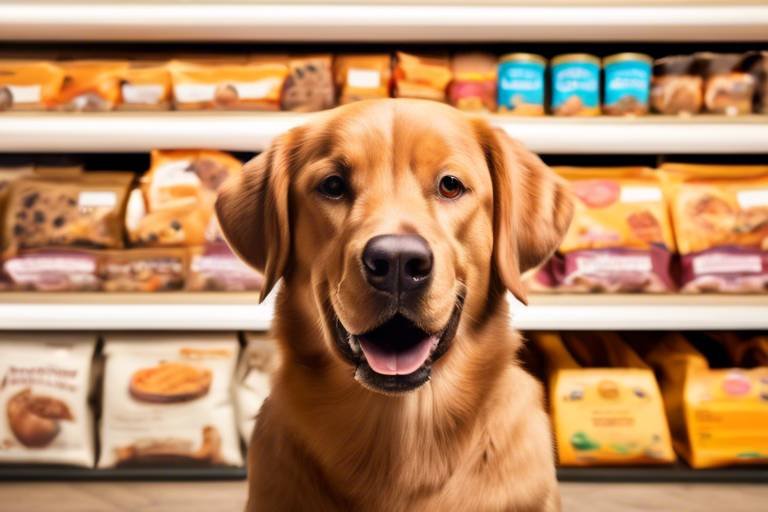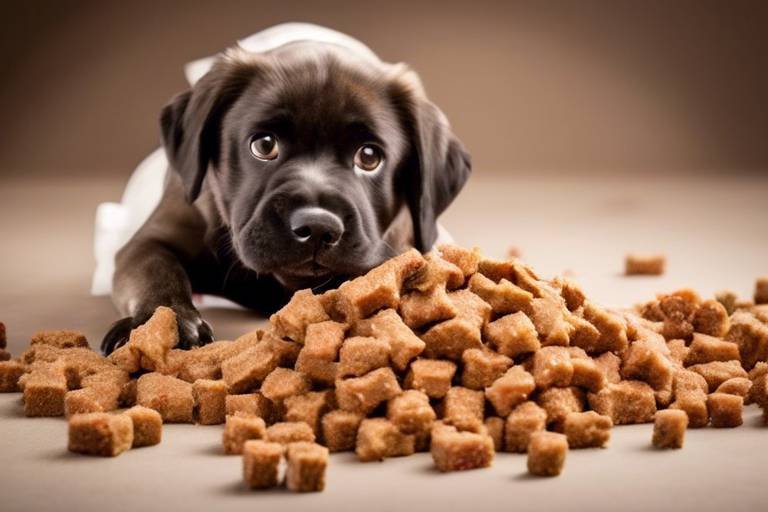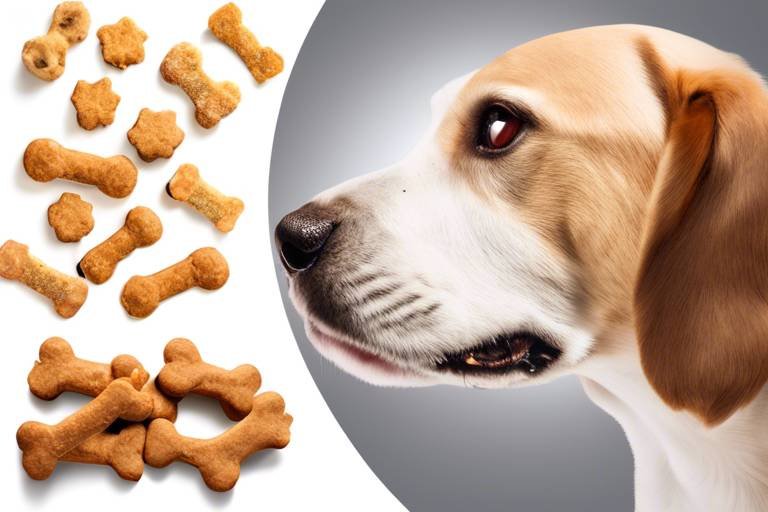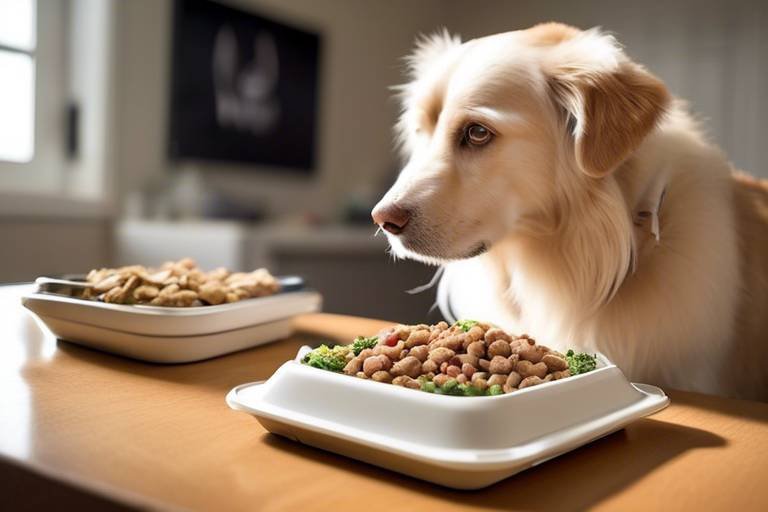How to Choose the Right Bowl for Your Pet’s Diet
Choosing the right bowl for your beloved pet is more than just a simple decision; it’s a crucial aspect of their overall health and happiness. Think about it: every meal, every snack, and every sip of water happens in that bowl. So, the question arises—how do you ensure that you select the perfect one? In this article, we will explore essential factors that you should consider to make an informed choice. From materials and sizes to designs and cleaning, we’ll cover everything you need to know to enhance your pet's feeding experience. Let’s dive in!
When it comes to pet bowls, the material is a key player. Different materials serve different purposes, and understanding these can help you choose a bowl that is not only safe but also durable and easy to clean. Here’s a quick rundown of the most common materials:
| Material | Pros | Cons |
|---|---|---|
| Stainless Steel |
|
|
| Ceramic |
|
|
| Plastic |
|
|
Each material has its own set of advantages and disadvantages, so consider your pet's habits and your lifestyle when making your choice.
The size and depth of the bowl are crucial for your pet's comfort. Imagine trying to eat from a bowl that’s too deep or too shallow; it can be frustrating! A bowl that is too small may require frequent refills, while one that’s too large can lead to spills. So, how do you find that sweet spot?
Different breeds have different needs. For instance, small dogs may require shallow bowls to prevent them from straining their necks, while larger breeds benefit from deeper, wider bowls that can accommodate their size and feeding habits. It's all about making mealtime comfortable and enjoyable for your pet.
If you’re a proud parent of a puppy or kitten, keep in mind that their bowl needs may change as they grow. You might start with a smaller bowl but will need to adjust in size and shape as they develop. Think of it like buying clothes; you wouldn’t want to invest in a wardrobe that they’ll outgrow in a few months!
The height at which your pet eats can also impact their comfort. Elevated bowls may be particularly beneficial for larger breeds or older pets with joint issues, promoting better posture during meals. It's like having a dining table at the right height—comfort matters!
Let’s not forget about design! A bowl that suits your pet's eating habits can significantly enhance their feeding experience. For example, bowls with a wider base can reduce spills, making mealtime less messy for both you and your furry friend. Plus, a fun design can add a splash of personality to your home!
Have you ever watched your pet excitedly dive into their food, only to send their bowl sliding across the floor? Bowls with anti-slip bases can prevent this chaos, helping to keep your pet’s food in place and reducing mess, especially for those enthusiastic eaters.
A bowl with a weighted bottom provides stability, ensuring that it remains in place even when your pet is excited about their meal. This minimizes spills and distractions, allowing your pet to focus on what really matters—enjoying their food!
Non-tip designs are particularly useful for pets that tend to push their bowls around. These designs provide a more pleasant dining experience and reduce the likelihood of accidents, making mealtime less stressful for everyone involved.
Last but certainly not least, let’s talk about cleaning. Selecting a bowl that is easy to clean and maintain is essential for your pet's health. Nobody wants to deal with a dirty bowl, right? Consider dishwasher-safe options or materials that resist staining and odors.
Choosing bowls that are dishwasher-safe simplifies the cleaning process, ensuring that your pet’s feeding area remains hygienic without requiring extensive manual labor. After all, who has time for scrubbing when you could be playing with your pet?
Durability is key; selecting bowls made from high-quality materials ensures they withstand daily use, preventing chips, cracks, or wear that could compromise your pet's safety. Think of it as an investment in your pet's well-being!
Q: How often should I replace my pet's bowl?
A: It’s a good idea to replace your pet’s bowl every 6 to 12 months, especially if you notice any signs of wear and tear.
Q: Can I use human dishes for my pet?
A: While it’s possible, it’s not recommended. Pet bowls are specifically designed for their needs, and using human dishes may not be safe or suitable.
Q: What should I avoid when choosing a pet bowl?
A: Avoid bowls made from low-quality plastic, as they may leach harmful chemicals. Also, steer clear of bowls that are too shallow or deep for your pet’s size.
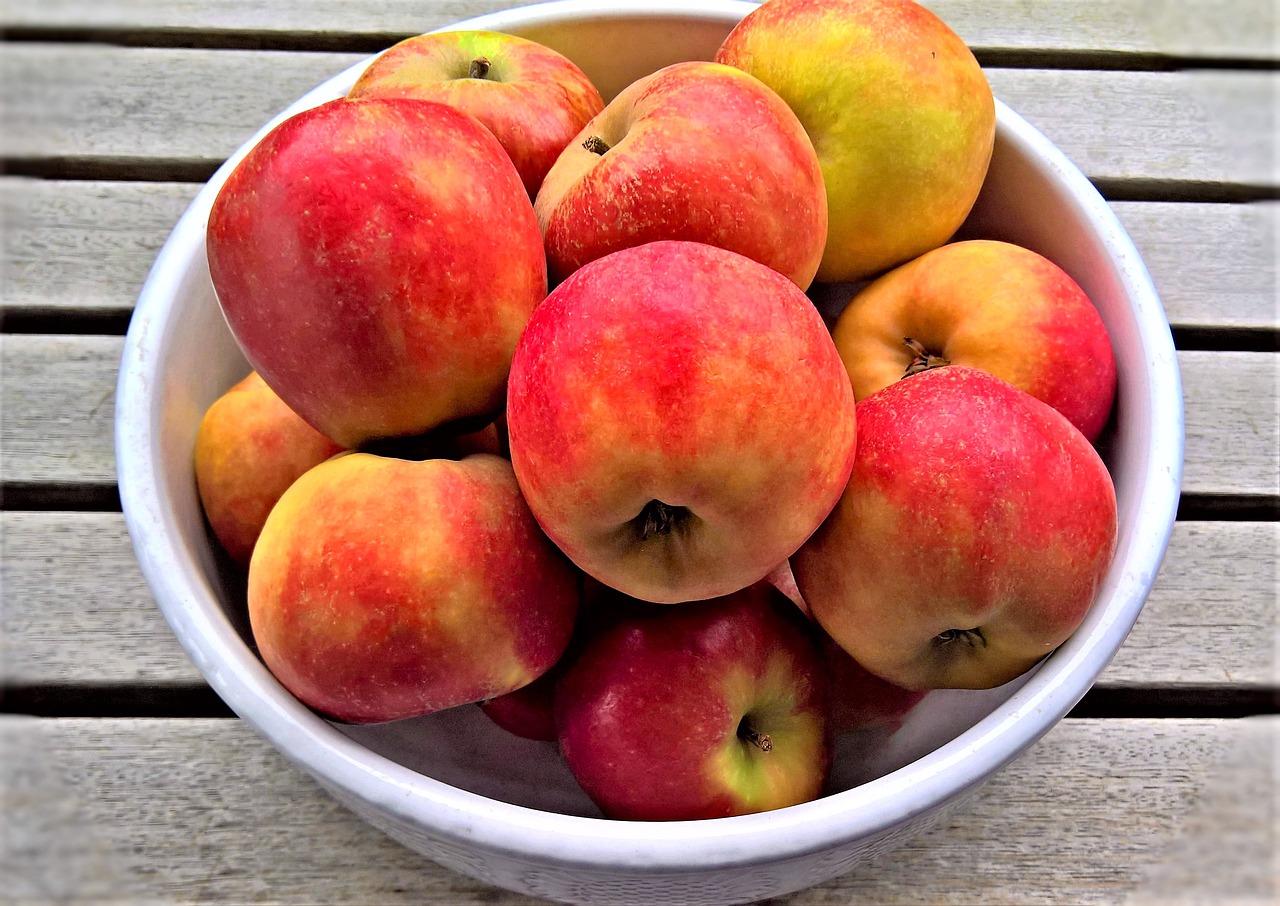
Material Matters
This article explores essential factors to consider when selecting a bowl for your pet, ensuring their feeding experience is safe, comfortable, and tailored to their dietary needs.
When it comes to choosing the right bowl for your furry friend, more than you might think! The material of the bowl not only affects its durability but also its safety and ease of cleaning. Let’s break down the common materials used in pet bowls:
| Material | Pros | Cons |
|---|---|---|
| Stainless Steel |
|
Can be noisy when pets eat from them. |
| Ceramic |
|
Can chip or crack easily if dropped. |
| Plastic |
|
Can scratch easily and may harbor bacteria. |
Each material has its own set of advantages and disadvantages, so it’s crucial to consider your pet's unique needs and habits. For example, if your pet is prone to knocking over their bowl, a heavier ceramic or stainless steel option might be the best choice. On the other hand, if you’re looking for something lightweight for a small breed, plastic could work just fine.
Moreover, think about the hygiene factor. Stainless steel and ceramic bowls are generally easier to keep clean and are less likely to harbor bacteria, while plastic bowls can scratch over time, creating tiny crevices where bacteria can thrive. If you opt for plastic, make sure to replace it regularly to maintain your pet’s health.
In summary, choosing the right material for your pet’s bowl is essential for their health, comfort, and overall dining experience. By understanding the pros and cons of each material, you can make an informed decision that best suits your furry friend.
Selecting the appropriate size and depth of the bowl is crucial for your pet's comfort and ease of feeding, ensuring they can access their food without difficulty or mess.
Different breeds have varying needs; small dogs may require shallow bowls, while larger breeds benefit from deeper, wider bowls to accommodate their size and feeding habits.
If you have a puppy or kitten, consider how their bowl needs may change as they grow, requiring adjustments in size and shape to accommodate their development.
The height at which your pet eats can impact their comfort; elevated bowls may be beneficial for larger breeds or older pets with joint issues, promoting better posture during meals.
Choosing a bowl with a design that suits your pet's eating habits can enhance their feeding experience, reducing spills and making mealtime more enjoyable for both pet and owner.
Bowls with anti-slip bases can prevent sliding during feeding, helping to keep your pet’s food in place and reducing mess, especially for enthusiastic eaters.
A bowl with a weighted bottom provides stability, ensuring that it remains in place even when your pet is excited about their meal, minimizing spills and distractions.
Non-tip designs are particularly useful for pets that tend to push their bowls around, providing a more pleasant dining experience and reducing the likelihood of accidents.
Selecting a bowl that is easy to clean and maintain is essential for your pet's health; consider dishwasher-safe options or materials that resist staining and odors.
Choosing bowls that are dishwasher-safe simplifies the cleaning process, ensuring that your pet’s feeding area remains hygienic without requiring extensive manual labor.
Durability is key; selecting bowls made from high-quality materials ensures they withstand daily use, preventing chips, cracks, or wear that could compromise your pet's safety.
Q: How often should I clean my pet's bowl?
A: It's recommended to clean your pet's bowl daily to prevent bacteria buildup.
Q: Can I use human bowls for my pet?
A: While it's possible, it's best to use bowls specifically designed for pets to ensure safety and suitability.
Q: What size bowl should I get for my pet?
A: The size of the bowl should correspond to your pet's breed and eating habits; consult your vet if unsure.
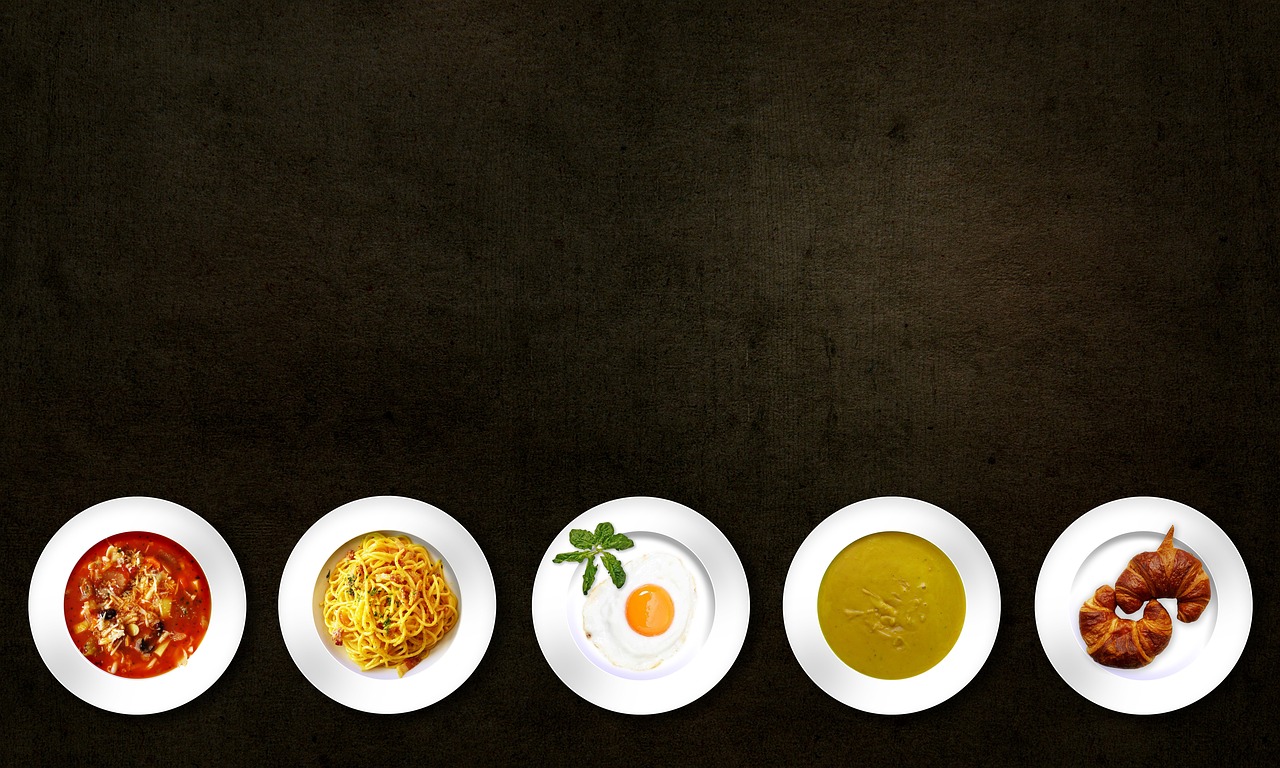
Size and Depth
When it comes to selecting the right bowl for your pet, are crucial factors that can significantly impact their feeding experience. Imagine trying to enjoy a meal from a bowl that’s either too small or too deep—it can be a frustrating experience, right? Just like us, pets have their own preferences and needs when it comes to dining. A bowl that is too shallow might lead to spills and mess, while a bowl that is too deep can make it difficult for your furry friend to reach their food comfortably. Taking the time to choose the right size and depth ensures that your pet can enjoy their meals without any hassle.
For small breeds, a shallow bowl is often the best choice. These little guys can struggle with deep bowls, which can lead to awkward eating positions and even frustration. On the other hand, larger breeds require wider and deeper bowls to accommodate their size. A bowl that is too small can make mealtime a bit of a circus act, with food flying everywhere as they try to dig in. So, it’s essential to consider your pet’s breed and size when making your selection.
Let’s break it down a bit more. Small dogs, like Chihuahuas or Pomeranians, generally do well with bowls that are shallow and wide. This allows them to access their food without having to strain their necks or faces. In contrast, larger breeds, such as Great Danes or Labradors, benefit from bowls that are not only deeper but also wider. This helps them eat comfortably without having to awkwardly maneuver their heads. A well-chosen bowl can make a world of difference in your pet's dining experience, promoting better eating habits and reducing mess.
If you’re a proud parent of a growing puppy or kitten, it’s important to consider how their bowl needs may change as they develop. Just as children grow out of their clothes, pets will outgrow their bowls. Puppies, for instance, may start with a smaller, shallower bowl but will require larger options as they grow. Keeping an eye on their growth and adjusting their feeding bowls accordingly can help ensure they always have a comfortable dining experience.
Another aspect to consider is the height at which your pet eats. Elevated bowls can be a game-changer for larger breeds or older pets with joint issues. Imagine trying to eat your dinner while hunched over; it’s not pleasant, right? Elevating the bowl can promote better posture and make mealtime much more comfortable for your furry friend. It’s all about creating an environment that encourages healthy eating habits.
In conclusion, selecting the right size and depth of your pet's bowl is not just a matter of aesthetics; it’s about ensuring their comfort and well-being. By considering their breed, age, and feeding habits, you can make an informed choice that enhances their overall dining experience. So, next time you’re shopping for a bowl, remember that a little thought goes a long way in making mealtime a joy for your beloved pet.
- What size bowl should I get for my puppy? - It’s best to start with a smaller, shallow bowl that they can manage easily. As they grow, you’ll need to upgrade to a larger size.
- Can I use the same bowl for different pets? - It’s advisable to have separate bowls for each pet, especially if they have different sizes and eating habits.
- How often should I clean my pet's bowl? - Clean the bowl daily to maintain hygiene, especially if your pet tends to leave food remnants.
Small vs. Large Breeds
When it comes to choosing the right bowl for your pet, size matters immensely, especially when you consider the vast differences between small and large breeds. Imagine a tiny Chihuahua trying to eat from a massive bowl designed for a Great Dane; it would be like a child trying to climb a mountain! Each breed has unique needs that stem from their size, shape, and eating habits. For small breeds, shallow bowls are often ideal. These bowls allow your petite pooch to reach their food without straining their necks or making a mess. Think of it as giving them a cozy little dining nook where they can savor every bite comfortably.
On the flip side, large breeds require bowls that are deeper and wider. This is not just about accommodating their size; it’s also about their natural feeding posture. A bowl that’s too shallow might lead to awkward bending and could even cause discomfort over time. Therefore, selecting a bowl that can handle the robust appetite of a larger dog is essential. It’s akin to giving them a banquet feast—plenty of room to dig in without feeling cramped!
Moreover, if you’re a proud parent of both small and large breeds, you might need to invest in multiple bowls to cater to their specific needs. Here’s a quick comparison of the bowl requirements for small versus large breeds:
| Feature | Small Breeds | Large Breeds |
|---|---|---|
| Size | Shallow and compact | Deep and wide |
| Weight | Lightweight | Heavier for stability |
| Material | Plastic or ceramic | Stainless steel or heavy ceramic |
| Height | Lower to the ground | Elevated options beneficial |
Additionally, if you have a puppy or kitten, their needs will change as they grow. You might find yourself needing to adjust their bowls as they transition from adorable little furballs to full-grown companions. This adjustment is crucial, as a bowl that was perfect for a tiny pup may become inadequate once they reach their adult size. So, keep an eye on their growth and be ready to switch things up to ensure they have the best dining experience possible.
In conclusion, understanding the differences between small and large breeds is vital when selecting the right bowl. The right bowl can enhance their feeding experience, making it more enjoyable and comfortable. After all, a happy pet is a healthy pet!
- What size bowl should I choose for my small dog? A shallow bowl that is easy for them to reach is best.
- Do large dogs need elevated bowls? Yes, elevated bowls can help with posture and digestion.
- How often should I clean my pet's bowl? It's best to clean it daily to maintain hygiene.
Adjusting for Growth
When you bring a puppy or a kitten into your home, it’s not just their adorable little faces that you need to consider; their eating habits and needs will change as they grow. Just like a toddler needs different clothes as they grow, your furry friend will require adjustments in their feeding bowls too. Initially, a smaller bowl might be perfect for a tiny pup, but as they grow, you’ll find that they need something larger and more accommodating.
It’s crucial to keep an eye on your pet’s growth spurts. For instance, a small breed puppy may start with a bowl that’s just a few inches deep, perfect for their little snouts. As they grow, you might need to transition to a bowl that’s not only deeper but also wider to allow for their growing appetite. Think of it like upgrading from a kiddie pool to a full-sized one; it’s all about comfort and accessibility!
Here are some key points to consider when adjusting your pet's bowl as they grow:
- Size Changes: Measure your pet’s height and adjust the bowl size accordingly. A bowl that’s too small can lead to frustration during mealtime.
- Shape Matters: Consider the shape of the bowl. Some pets prefer a wider, flatter bowl, while others may do better with a deeper one.
- Material Consideration: As your pet grows, they may become more vigorous in their eating habits, so ensure the bowl is made from durable materials that can withstand a bit of roughhousing.
Moreover, don’t forget that as your pet grows, their nutritional needs may also change. Puppies typically require more frequent meals with a focus on high-quality, nutrient-rich food to support their rapid growth. This means that you may need to adjust not just the bowl size but also the feeding schedule. Keeping a close eye on their dietary requirements will ensure they grow up healthy and strong.
Lastly, consider the height at which your pet eats. If your puppy is expected to grow into a large breed, investing in an adjustable or elevated bowl could be beneficial right from the start. This way, you won’t have to worry about their posture as they munch away, and it can help reduce strain on their joints as they age. Just like you wouldn’t want to eat dinner while hunched over, your pet deserves a comfortable dining experience too!
Feeding Position
When it comes to your pet's mealtime, the can significantly impact their comfort and overall dining experience. Imagine trying to enjoy a meal while hunched over or straining your neck; it just doesn't feel right, does it? This is especially true for our furry companions. The height at which your pet eats can play a crucial role in their digestion and posture. For larger breeds or older pets with joint issues, an elevated bowl can be a game changer. It allows them to eat in a more natural position, reducing strain on their neck and back.
Consider this: just like humans, pets can develop habits based on their feeding setup. If a bowl is too low, your pet might find themselves awkwardly bending down, which can lead to discomfort over time. On the flip side, if the bowl is too high, it might be challenging for smaller breeds to access their food. Therefore, finding that sweet spot is essential. You want your pet to feel relaxed and happy while they eat, just like you would want for yourself.
Furthermore, the right feeding position can also aid in preventing certain health issues. For instance, pets that eat too quickly might be at risk for bloat, a potentially life-threatening condition. Elevated bowls can help slow down their eating pace, allowing them to savor their food rather than gulp it down. This simple adjustment can lead to a more enjoyable mealtime experience and promote better digestion.
To sum it up, when selecting a bowl for your pet, consider their size, age, and any specific health concerns they may have. An elevated bowl isn't just a luxury; it can be a necessity for some pets. So, take a moment to evaluate your pet's feeding position and make adjustments as needed. After all, a happy pet makes for a happy home!
- What is the best height for an elevated bowl? The ideal height varies based on your pet's size. Generally, the bowl should be at a level that allows your pet to eat comfortably without bending down too much.
- Can I use a regular bowl for my older pet? While regular bowls can be used, consider switching to an elevated bowl if your older pet has joint issues or struggles to bend down.
- How do I know if my pet is comfortable while eating? Observe their posture. If they seem strained or hesitant to eat, it may be time to adjust their feeding position.
Design and Functionality
This article explores essential factors to consider when selecting a bowl for your pet, ensuring their feeding experience is safe, comfortable, and tailored to their dietary needs.
Understanding the different materials used in pet bowls, such as stainless steel, ceramic, and plastic, can help you choose one that is safe, durable, and easy to clean for your furry friend.
Selecting the appropriate size and depth of the bowl is crucial for your pet's comfort and ease of feeding, ensuring they can access their food without difficulty or mess.
Different breeds have varying needs; small dogs may require shallow bowls, while larger breeds benefit from deeper, wider bowls to accommodate their size and feeding habits.
If you have a puppy or kitten, consider how their bowl needs may change as they grow, requiring adjustments in size and shape to accommodate their development.
The height at which your pet eats can impact their comfort; elevated bowls may be beneficial for larger breeds or older pets with joint issues, promoting better posture during meals.
When it comes to your pet's feeding experience, design and functionality play pivotal roles. Imagine a bowl that not only serves its purpose but also enhances your pet's mealtime enjoyment. A well-designed bowl can prevent spills and make feeding less messy. For instance, some bowls come with a sloped design that encourages pets to eat from the center, reducing the chances of food being pushed out onto the floor. Additionally, bowls with high sides can help contain food and water, making them perfect for those enthusiastic eaters who seem to think their meals are a race!
Moreover, the color and style of the bowl can reflect your personality and home decor. You can choose from a variety of fun and vibrant colors, patterns, or even personalized designs that make mealtime feel special for your furry friend. But remember, aesthetics should not overshadow functionality. For example, a bowl with a wide base and a lower center of gravity can help prevent tipping, especially for pets that like to get a bit rambunctious during dinner time.
It’s also essential to consider the material of the bowl in relation to its design. Some materials, like ceramic or glass, can be more visually appealing but may not be the best choice for clumsy eaters. On the other hand, stainless steel bowls are often more durable and less prone to breaking, making them an excellent choice for households with active pets. Ultimately, the right combination of design and functionality can lead to a more enjoyable feeding experience for both you and your pet.
Bowls with anti-slip bases can prevent sliding during feeding, helping to keep your pet’s food in place and reducing mess, especially for enthusiastic eaters.
A bowl with a weighted bottom provides stability, ensuring that it remains in place even when your pet is excited about their meal, minimizing spills and distractions.
Non-tip designs are particularly useful for pets that tend to push their bowls around, providing a more pleasant dining experience and reducing the likelihood of accidents.
Selecting a bowl that is easy to clean and maintain is essential for your pet's health; consider dishwasher-safe options or materials that resist staining and odors.
Choosing bowls that are dishwasher-safe simplifies the cleaning process, ensuring that your pet’s feeding area remains hygienic without requiring extensive manual labor.
Durability is key; selecting bowls made from high-quality materials ensures they withstand daily use, preventing chips, cracks, or wear that could compromise your pet's safety.
- What is the best material for a pet bowl? Stainless steel is often recommended for its durability and ease of cleaning.
- How do I know the right size bowl for my pet? Consider your pet's breed size and eating habits; measure their snout length and choose accordingly.
- Are elevated bowls better for dogs? Yes, elevated bowls can help larger breeds and older pets eat more comfortably.
- How often should I clean my pet's bowl? It's best to clean your pet's bowl daily to maintain hygiene.
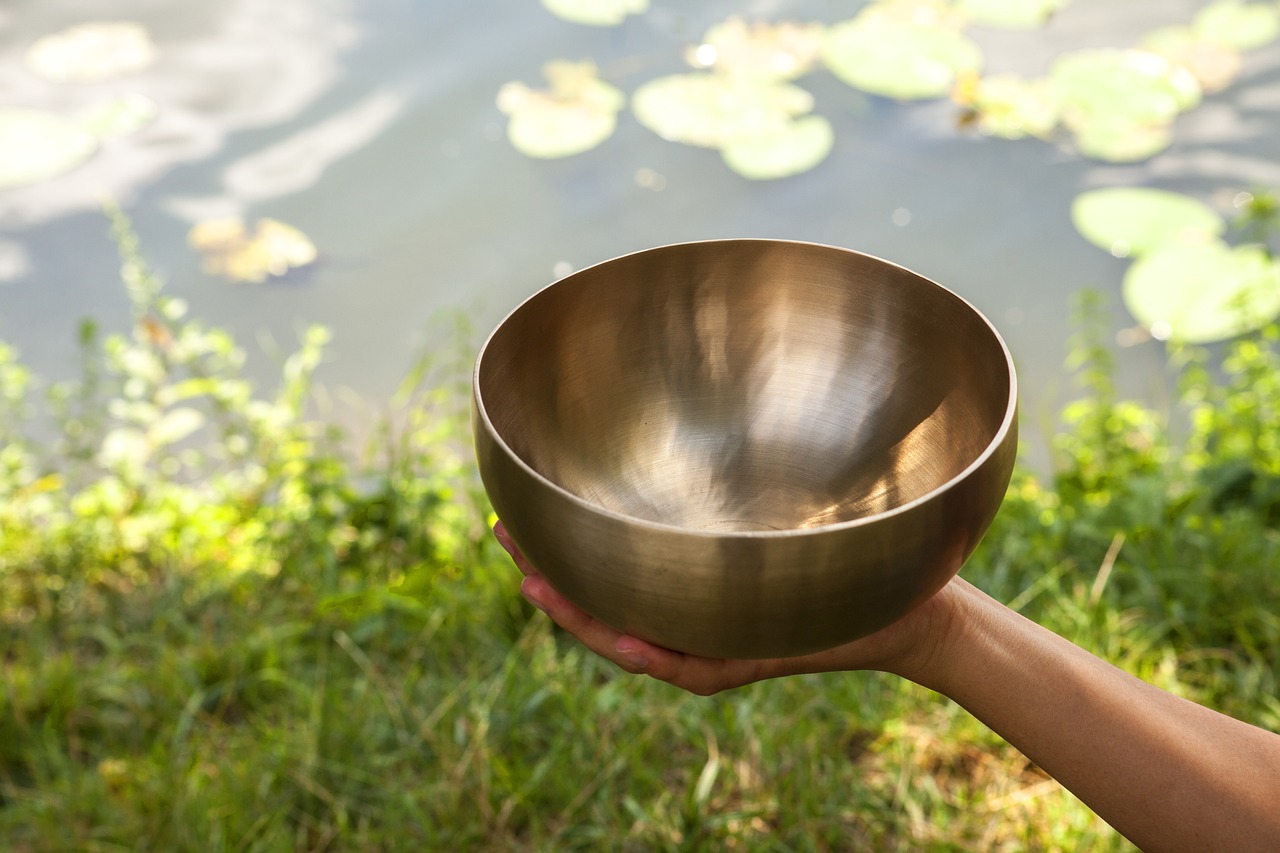
Anti-Slip Features
This article explores essential factors to consider when selecting a bowl for your pet, ensuring their feeding experience is safe, comfortable, and tailored to their dietary needs.
Understanding the different materials used in pet bowls, such as stainless steel, ceramic, and plastic, can help you choose one that is safe, durable, and easy to clean for your furry friend.
Selecting the appropriate size and depth of the bowl is crucial for your pet's comfort and ease of feeding, ensuring they can access their food without difficulty or mess.
Different breeds have varying needs; small dogs may require shallow bowls, while larger breeds benefit from deeper, wider bowls to accommodate their size and feeding habits.
If you have a puppy or kitten, consider how their bowl needs may change as they grow, requiring adjustments in size and shape to accommodate their development.
The height at which your pet eats can impact their comfort; elevated bowls may be beneficial for larger breeds or older pets with joint issues, promoting better posture during meals.
Choosing a bowl with a design that suits your pet's eating habits can enhance their feeding experience, reducing spills and making mealtime more enjoyable for both pet and owner.
When it comes to your pet's feeding experience, in a bowl can make a world of difference. Imagine your excitable pup, tail wagging furiously, diving into their meal with all the enthusiasm of a kid in a candy store. Now, picture that same bowl sliding across the floor, sending food flying everywhere. Not ideal, right? That's where anti-slip bases come in, providing stability during mealtime and ensuring that your pet's food stays right where it belongs. These features are especially beneficial for enthusiastic eaters who might otherwise turn their feeding time into a mini wrestling match.
There are several ways manufacturers incorporate anti-slip technology into pet bowls:
- Rubberized Bottoms: Many bowls come with rubber grips on the bottom, preventing them from sliding around on hardwood or tile floors.
- Weighted Designs: Some bowls are designed with added weight, which helps them stay put even when your pet is energetically digging into their food.
- Non-Tip Shapes: Unique shapes, such as wider bases, can help prevent tipping, making it harder for your pet to push their bowl around.
Choosing a bowl with these features not only helps in keeping your pet's feeding area tidy but also promotes a more enjoyable mealtime experience. After all, who wants to deal with the aftermath of a food fight every time their furry friend sits down for a meal? Investing in an anti-slip bowl can save you from those messy clean-ups and allow your pet to focus on what really matters—enjoying their food!
Selecting a bowl that is easy to clean and maintain is essential for your pet's health; consider dishwasher-safe options or materials that resist staining and odors.
Choosing bowls that are dishwasher-safe simplifies the cleaning process, ensuring that your pet’s feeding area remains hygienic without requiring extensive manual labor.
Durability is key; selecting bowls made from high-quality materials ensures they withstand daily use, preventing chips, cracks, or wear that could compromise your pet's safety.
Q: How often should I clean my pet's bowl?
A: It's best to clean your pet's bowl daily to prevent bacteria buildup, especially for wet food. If your pet has a specific health condition, consider cleaning it more frequently.
Q: Can I use human bowls for my pet?
A: While some human bowls may be safe, they often lack the specific features needed for pets, such as anti-slip bases or appropriate sizes. It's best to invest in a bowl designed for your pet's needs.
Q: What size bowl should I get for my pet?
A: The size of the bowl depends on your pet's breed and eating habits. Smaller breeds may need shallow bowls, while larger breeds require deeper, wider ones for comfort.
Weighted Bottoms
When it comes to choosing the right bowl for your pet, one feature that often gets overlooked is the weighted bottom. You might be wondering, "Why does that even matter?" Well, let me tell you, a bowl with a weighted bottom can be a game changer during mealtime! Imagine your pet, excited and ready to chow down, only to have their bowl slide across the floor like a hockey puck. Not only is that annoying, but it can also lead to spills and messes that you'll have to clean up later.
A bowl with a weighted bottom provides the stability that enthusiastic eaters need. This design feature ensures that the bowl remains in place, even when your furry friend is diving in with gusto. No more chasing the bowl around the kitchen or worrying about food ending up on the floor instead of in your pet's belly! Plus, it allows your pet to focus on enjoying their meal without distractions.
But that's not all—these bowls also come in a variety of styles and materials, so you can find one that matches your home decor while serving its practical purpose. Whether you have a playful puppy or a large, boisterous dog, a weighted bowl can help create a more pleasant dining experience. In fact, studies have shown that pets are less likely to experience anxiety during meals when their bowls stay put, leading to healthier eating habits.
So, if you're considering a new bowl for your pet, don't underestimate the importance of a weighted bottom. It not only enhances your pet's feeding experience but also saves you from the hassle of constant clean-ups. In summary, a bowl with a weighted bottom is a small investment that can make a big difference in your pet's mealtime routine.
- Q: Are weighted bowls suitable for all pet sizes?
A: Yes, weighted bowls can benefit pets of all sizes, but it's essential to choose the right size and depth for your specific pet. - Q: Can I use a weighted bowl for water as well?
A: Absolutely! Weighted bowls are great for both food and water, ensuring stability in both cases. - Q: How do I clean a weighted bowl?
A: Most weighted bowls are dishwasher-safe, but you can also hand wash them with mild soap and water. - Q: Will a weighted bowl prevent my pet from pushing it around?
A: While it significantly reduces the chances, some pets may still manage to nudge their bowls. However, the weighted design helps keep it in place more effectively than standard bowls.
Non-Tip Designs
When it comes to your pet's dining experience, can make a world of difference. Imagine your furry friend, excitedly diving into their meal, only to send their bowl flying across the room. It's a messy scene, isn't it? Non-tip bowls are specifically crafted to stay put, ensuring that your pet can focus on their food rather than worrying about their bowl tipping over. These bowls often feature unique shapes or weighted bases that prevent them from being easily pushed around, making mealtime a breeze for both pets and their owners.
One of the standout features of non-tip designs is their ability to minimize spills. For enthusiastic eaters, a bowl that stays in place can significantly reduce the mess around their feeding area. You might wonder, what makes these bowls so effective? Here’s a quick breakdown:
- Weighted Bases: Many non-tip bowls come with a heavier bottom, which keeps them grounded even when your pet is excited.
- Special Shapes: Some bowls are designed with a wider base or unique contours that make it difficult for pets to flip them over.
- Anti-Slip Materials: These bowls often incorporate rubber or silicone materials that grip the floor, adding an extra layer of stability.
Choosing a non-tip bowl not only enhances your pet's dining experience but also provides peace of mind for you. You won't have to constantly clean up after mealtime chaos, and your pet can enjoy their food without distractions. Plus, these bowls come in various styles and colors, so you can find one that fits your home decor while serving a practical purpose.
In addition to being functional, non-tip designs can be aesthetically pleasing. Many manufacturers are now focusing on creating bowls that are not only sturdy but also stylish. So, you can have a bowl that complements your home while keeping your pet's feeding area tidy. Whether your pet is a gentle eater or a vigorous muncher, investing in a non-tip bowl is a smart choice that pays off in convenience and cleanliness.
1. Are non-tip bowls suitable for all pets?
Yes, non-tip bowls are designed to accommodate various pets, from small dogs to larger breeds. They are particularly beneficial for energetic eaters who tend to push their bowls around.
2. How do I clean non-tip bowls?
Most non-tip bowls are made from materials that are easy to clean. Check if they are dishwasher-safe for hassle-free cleaning, or simply rinse them with warm, soapy water after each use.
3. Can I use non-tip bowls for water as well?
Absolutely! Non-tip designs work great for both food and water bowls, helping to keep spills to a minimum in both cases.
4. Do non-tip bowls come in different sizes?
Yes, non-tip bowls are available in various sizes to suit the needs of different pets. Make sure to choose a size appropriate for your pet's breed and eating habits.
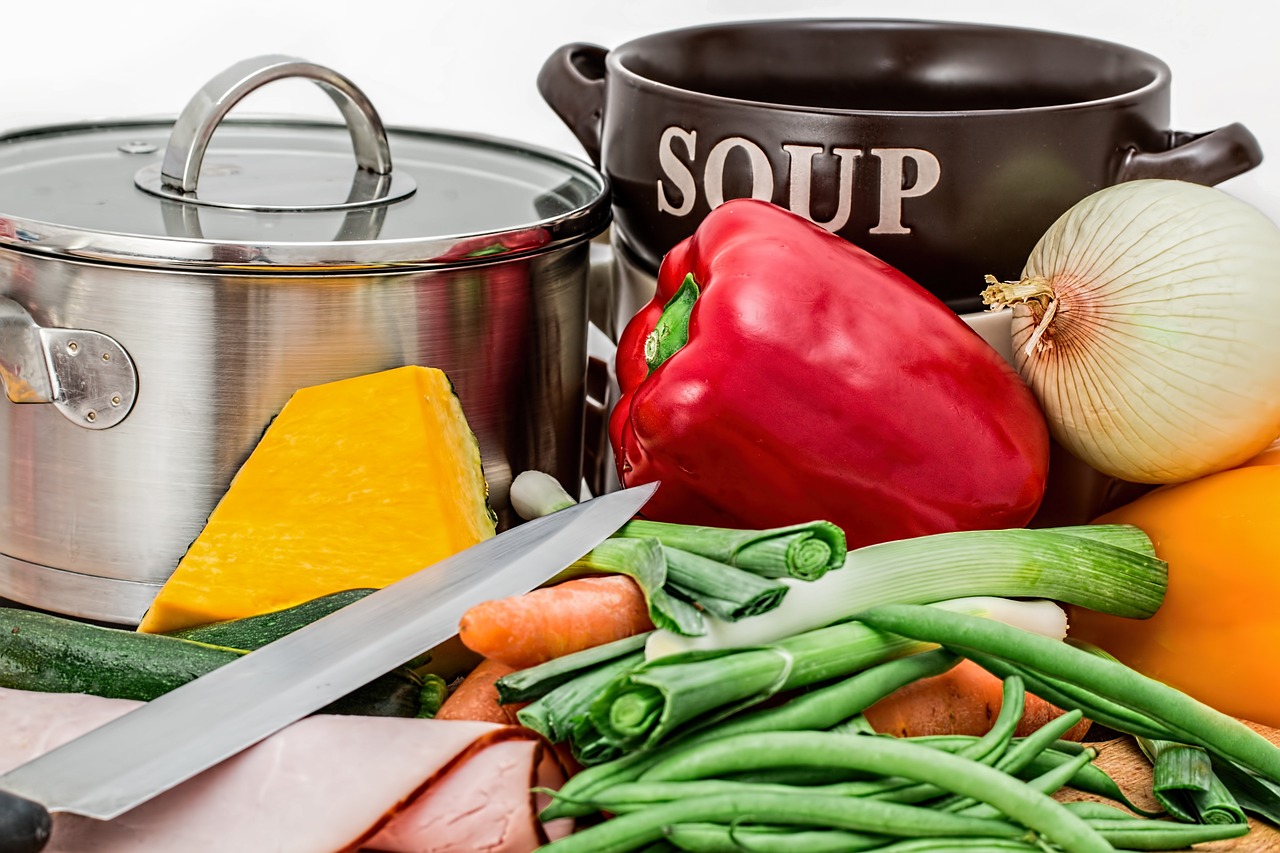
Cleaning and Maintenance
This article explores essential factors to consider when selecting a bowl for your pet, ensuring their feeding experience is safe, comfortable, and tailored to their dietary needs.
Understanding the different materials used in pet bowls, such as stainless steel, ceramic, and plastic, can help you choose one that is safe, durable, and easy to clean for your furry friend.
Selecting the appropriate size and depth of the bowl is crucial for your pet's comfort and ease of feeding, ensuring they can access their food without difficulty or mess.
Different breeds have varying needs; small dogs may require shallow bowls, while larger breeds benefit from deeper, wider bowls to accommodate their size and feeding habits.
If you have a puppy or kitten, consider how their bowl needs may change as they grow, requiring adjustments in size and shape to accommodate their development.
The height at which your pet eats can impact their comfort; elevated bowls may be beneficial for larger breeds or older pets with joint issues, promoting better posture during meals.
Choosing a bowl with a design that suits your pet's eating habits can enhance their feeding experience, reducing spills and making mealtime more enjoyable for both pet and owner.
Bowls with anti-slip bases can prevent sliding during feeding, helping to keep your pet’s food in place and reducing mess, especially for enthusiastic eaters.
A bowl with a weighted bottom provides stability, ensuring that it remains in place even when your pet is excited about their meal, minimizing spills and distractions.
Non-tip designs are particularly useful for pets that tend to push their bowls around, providing a more pleasant dining experience and reducing the likelihood of accidents.
Selecting a bowl that is easy to clean and maintain is essential for your pet's health. A clean bowl not only ensures that your pet enjoys fresh food but also prevents the buildup of bacteria that could lead to health issues. One of the best choices you can make is to look for dishwasher-safe options, which simplify the cleaning process significantly. Imagine not having to scrub your pet's bowl by hand after every meal! Instead, you can simply toss it in the dishwasher and let it do the hard work for you.
When considering materials, durability is key. Bowls made from high-quality materials resist staining and odors, which is crucial in maintaining a hygienic feeding environment. For instance, stainless steel bowls are not only sturdy but also resistant to rust and corrosion, making them a long-lasting option. On the other hand, ceramic bowls can add a touch of style but should be checked for any chips or cracks that might harbor bacteria.
Here's a quick comparison of common bowl materials:
| Material | Durability | Ease of Cleaning | Health Safety |
|---|---|---|---|
| Stainless Steel | High | Dishwasher-safe | Non-porous |
| Ceramic | Medium | Hand wash recommended | Can chip |
| Plastic | Low to Medium | Dishwasher-safe (check labels) | Can scratch, harbor bacteria |
In summary, choosing the right bowl involves considering not just the aesthetics but also how easy it is to keep clean. A little attention to cleaning and maintenance can go a long way in ensuring your pet remains healthy and happy.
- How often should I clean my pet's bowl? Ideally, you should clean your pet's bowl after every meal to prevent bacteria buildup.
- Are plastic bowls safe for my pet? While plastic bowls are lightweight and affordable, they can scratch easily, which may harbor bacteria. Opt for high-quality, BPA-free plastic if you choose this material.
- Can I use my dishwasher for cleaning pet bowls? Yes, many bowls are dishwasher-safe, making cleaning much easier. Always check the manufacturer's instructions.
Dishwasher-Safe Options
This article explores essential factors to consider when selecting a bowl for your pet, ensuring their feeding experience is safe, comfortable, and tailored to their dietary needs.
Understanding the different materials used in pet bowls, such as stainless steel, ceramic, and plastic, can help you choose one that is safe, durable, and easy to clean for your furry friend.
Selecting the appropriate size and depth of the bowl is crucial for your pet's comfort and ease of feeding, ensuring they can access their food without difficulty or mess.
Different breeds have varying needs; small dogs may require shallow bowls, while larger breeds benefit from deeper, wider bowls to accommodate their size and feeding habits.
If you have a puppy or kitten, consider how their bowl needs may change as they grow, requiring adjustments in size and shape to accommodate their development.
The height at which your pet eats can impact their comfort; elevated bowls may be beneficial for larger breeds or older pets with joint issues, promoting better posture during meals.
Choosing a bowl with a design that suits your pet's eating habits can enhance their feeding experience, reducing spills and making mealtime more enjoyable for both pet and owner.
Bowls with anti-slip bases can prevent sliding during feeding, helping to keep your pet’s food in place and reducing mess, especially for enthusiastic eaters.
A bowl with a weighted bottom provides stability, ensuring that it remains in place even when your pet is excited about their meal, minimizing spills and distractions.
Non-tip designs are particularly useful for pets that tend to push their bowls around, providing a more pleasant dining experience and reducing the likelihood of accidents.
Selecting a bowl that is easy to clean and maintain is essential for your pet's health; consider dishwasher-safe options or materials that resist staining and odors.
When it comes to keeping your pet's feeding area hygienic, dishwasher-safe bowls are a game changer. Imagine the convenience of tossing your pet's bowl into the dishwasher after a messy meal, rather than scrubbing it by hand. This feature not only saves you time but also ensures that your pet's bowl is thoroughly cleaned and sanitized, minimizing the risk of bacteria buildup.
Many pet owners often overlook the importance of hygiene in their pet's feeding routine. A dishwasher-safe bowl can make a significant difference in maintaining cleanliness. Here are some key benefits:
- Ease of Cleaning: Dishwasher-safe bowls can be quickly cleaned without the hassle of hand washing.
- Sanitation: High temperatures in dishwashers help eliminate harmful bacteria and odors.
- Durability: Many dishwasher-safe options are made from robust materials that can withstand the rigors of repeated washing.
When selecting a dishwasher-safe bowl, look for options made from materials like stainless steel or high-quality ceramic, as they tend to hold up well in the dishwasher while resisting stains and odors. Avoid plastic bowls that may warp or degrade over time, compromising their safety and usability. Investing in a quality, dishwasher-safe bowl can enhance your pet's dining experience while making your life easier.
Q1: Are all pet bowls dishwasher safe?
A: No, not all pet bowls are dishwasher safe. Always check the manufacturer's guidelines before placing a bowl in the dishwasher.
Q2: What materials should I avoid for pet bowls?
A: Avoid plastic bowls that can harbor bacteria and may degrade over time. Opt for stainless steel or ceramic options instead.
Q3: How often should I wash my pet's bowl?
A: It's best to wash your pet's bowl after every meal to maintain hygiene and prevent bacteria buildup.
Material Durability
This article explores essential factors to consider when selecting a bowl for your pet, ensuring their feeding experience is safe, comfortable, and tailored to their dietary needs.
Understanding the different materials used in pet bowls, such as stainless steel, ceramic, and plastic, can help you choose one that is safe, durable, and easy to clean for your furry friend.
Selecting the appropriate size and depth of the bowl is crucial for your pet's comfort and ease of feeding, ensuring they can access their food without difficulty or mess.
Different breeds have varying needs; small dogs may require shallow bowls, while larger breeds benefit from deeper, wider bowls to accommodate their size and feeding habits.
If you have a puppy or kitten, consider how their bowl needs may change as they grow, requiring adjustments in size and shape to accommodate their development.
The height at which your pet eats can impact their comfort; elevated bowls may be beneficial for larger breeds or older pets with joint issues, promoting better posture during meals.
Choosing a bowl with a design that suits your pet's eating habits can enhance their feeding experience, reducing spills and making mealtime more enjoyable for both pet and owner.
Bowls with anti-slip bases can prevent sliding during feeding, helping to keep your pet’s food in place and reducing mess, especially for enthusiastic eaters.
A bowl with a weighted bottom provides stability, ensuring that it remains in place even when your pet is excited about their meal, minimizing spills and distractions.
Non-tip designs are particularly useful for pets that tend to push their bowls around, providing a more pleasant dining experience and reducing the likelihood of accidents.
Selecting a bowl that is easy to clean and maintain is essential for your pet's health; consider dishwasher-safe options or materials that resist staining and odors.
Choosing bowls that are dishwasher-safe simplifies the cleaning process, ensuring that your pet’s feeding area remains hygienic without requiring extensive manual labor.
When it comes to your pet's bowl, durability is key. Selecting bowls made from high-quality materials ensures they can withstand the rigors of daily use. Imagine your enthusiastic pup, tail wagging, ready to dive into their meal. You want a bowl that can handle that excitement without cracking or chipping. Here’s a quick breakdown of some common materials:
| Material | Durability | Pros | Cons |
|---|---|---|---|
| Stainless Steel | High | Rust-resistant, easy to clean | Can be noisy |
| Ceramic | Medium | Stylish, heavy | Can chip or crack |
| Plastic | Low | Lightweight, inexpensive | Can scratch easily, may harbor bacteria |
As you can see, each material has its own strengths and weaknesses. For instance, while stainless steel is incredibly durable and resistant to rust, it may not be the quietest option during mealtime. On the other hand, ceramic bowls can add a touch of style to your home but require careful handling to avoid chips. Lastly, while plastic bowls are budget-friendly, they may not stand the test of time, especially with vigorous eaters.
In conclusion, investing in a durable bowl can save you money and hassle in the long run. It’s not just about looks; it’s about ensuring that your pet enjoys their meals in a safe and stable environment.
- What is the best material for a pet bowl? Stainless steel is often regarded as the best option due to its durability and ease of cleaning.
- How often should I clean my pet's bowl? It's recommended to clean your pet's bowl at least once a day to maintain hygiene.
- Can I use human bowls for my pets? It's best to use bowls specifically designed for pets to ensure safety and comfort.
Frequently Asked Questions
- What material is best for my pet's bowl?
Choosing the right material is vital for your pet's health and safety. Stainless steel bowls are durable and easy to clean, while ceramic bowls offer aesthetic appeal but can chip. Plastic bowls are lightweight but may harbor bacteria if scratched. Consider your pet's habits and preferences when selecting the material.
- How do I determine the right size bowl for my pet?
The size of the bowl should match your pet's breed and feeding style. Smaller breeds often do well with shallow bowls, while larger breeds require deeper and wider options. It's essential to ensure that your pet can comfortably access their food without straining or creating a mess.
- Should I adjust my pet's bowl as they grow?
Absolutely! If you have a puppy or kitten, their needs will change as they grow. You may need to upgrade to larger bowls as they reach adulthood. Keeping their feeding experience comfortable is key to promoting healthy eating habits.
- Are elevated bowls beneficial for pets?
Yes, elevated bowls can significantly improve your pet's dining experience, especially for larger breeds or older pets with joint issues. They promote better posture and make it easier for your furry friend to enjoy their meals without straining their neck.
- What features should I look for to minimize spills?
Look for bowls with anti-slip bases or weighted bottoms. These features help keep the bowl in place during mealtime, reducing the likelihood of spills, especially for enthusiastic eaters who can get a bit too excited!
- How important is cleaning and maintenance for pet bowls?
Cleaning is crucial for your pet's health. Opt for dishwasher-safe bowls or materials that resist staining and odors. Regular cleaning helps prevent the buildup of harmful bacteria, ensuring your pet's feeding area remains hygienic.
- Can I use a bowl that is not dishwasher-safe?
You can, but it may require more effort to keep clean. Non-dishwasher-safe bowls need manual cleaning, which can be time-consuming. If you choose this option, ensure to clean it regularly to maintain a healthy feeding environment.
- What should I do if my pet pushes their bowl around?
If your pet tends to push their bowl, consider investing in non-tip designs. These bowls are designed to stay in place, providing a more pleasant dining experience and reducing the chance of accidents during mealtime.

